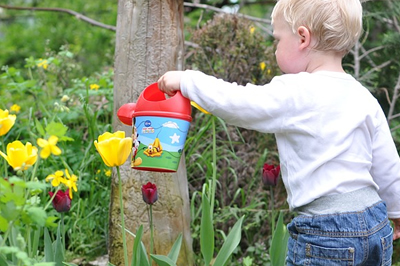 Our kids are too often kept occupied with games consoles, television or other activities these days. Their imaginations are transfixed on external satisfaction, which load them with huge levels of stress and anxiety. Allowing them to become their own masters in a reality that exists in their own homes, is far more rewarding for them mentally and physically.
Our kids are too often kept occupied with games consoles, television or other activities these days. Their imaginations are transfixed on external satisfaction, which load them with huge levels of stress and anxiety. Allowing them to become their own masters in a reality that exists in their own homes, is far more rewarding for them mentally and physically.
With our busy schedules as parents, often we find it easier to allow our children to get lost in their own activities, but as they get older this has an adverse effect on their perception of the world. In today’s instant gratification world, we have forgotten where everything we consume comes from. What better way to help your child grow and learn with some basic knowledge about where our daily food comes from.
Let’s Get Green Fingers
Having fun with any project that deviates our loved ones away from what everyone else is doing in class is important, so discuss it openly with your child. You would like them to help create a magical garden in the home, where you can both see how things grow. You may also wish to explain they can create whatever they want, and use examples of the things they like to eat.
Choosing the right ingredients for the indoor garden is important. You will need some pots or planters, some indoor growing compost, and some seeds. Consider the daylight you have coming into your home and where you are going to place the indoor plants. Ensure they have sufficient light to grow properly.
Alternatively, you can set up a tiny mushroom garden in your kitchen or utility room. Get started with mushroom growing kits for beginners. They’re super easy to set up on your kitchen counter close to the sink or in a dark, cool, and humid environment. Once the kits are all set, you and your little will only need to spray the inside with water at least twice daily or based on the instructions on the box. The mushrooms should be ready for harvesting after more than two weeks.
Get your child involved in choosing the garden – guide them towards things you know will bring excitement and encouragement, and that can produce results over a period of time.
Once you have decided on the assortment you will plant, travel to your local garden center and purchase the things you will need. If in doubt, seek the guidance of the center staff who will can help with input to your project.
Interaction
Encourage your child to share the plans with their friends and school teachers. This may turn into an interesting project for all of them to participate in, at home and in the classroom. This will bring your child a lot of self-confidence and pride, which is always needed in today’s society. The more fun and excitement that can be created, the better the results.
Allow them to read the instructions and daily needs for your chosen pots and planters, mark them with the various produce you will grow, and also make a calendar when you expect to see some greenery to show.
You should encourage your child to tend to their little garden on a daily basis, and to watch for signs of sprouting etc. You may also wish to encourage them to keep a journal, as this will also develop their writing and creative skills of communication.
Celebrate the First Crop!
When you have the signs of the first crop, plan a special day around it. You can perhaps invite some of your children’s friends to come over to have a small party. You may need to do some extra planning to cater for the party, but making a big deal about the event will encourage your child to see how important it is. They will also be given a sense of achievement by helping out, with their very own hands.
Try and use the produce in the party, like in a fruit salad or perhaps blend some indoor garden produce into a nutritious fruit smoothie, for your young guests.
Your children will feel proud by what they have grown with their own hands and others will also want to follow the lead.
You may want to reward your child for appreciation of their hard work during the growing process or after the party. This will also encourage them to keep pursuing their own connection with Mother Nature, and developing great skills for the future – away from TV, gaming console or iPad screens.

Comments
One response to “Creating an Indoor Garden with Your Kids”
I suggest my students to create a small garden in their backyard, it helps them to learn our ecosystem and environment easily.